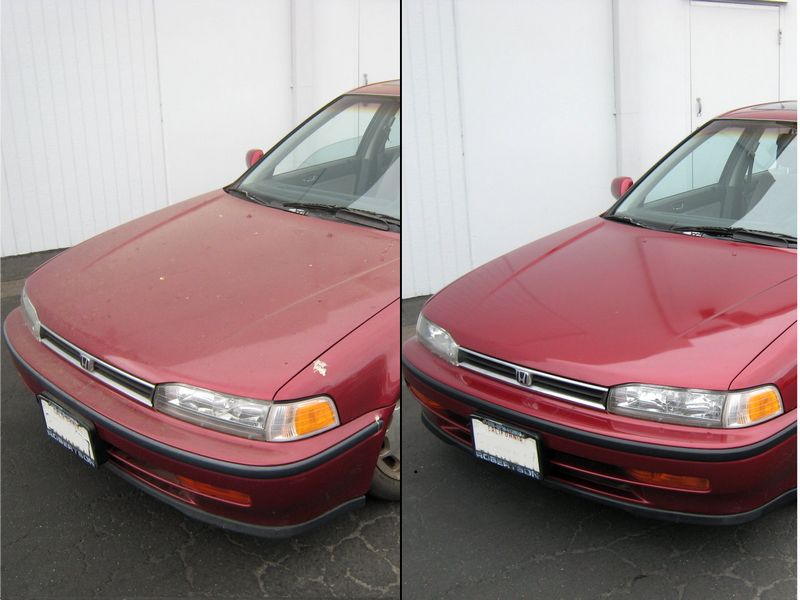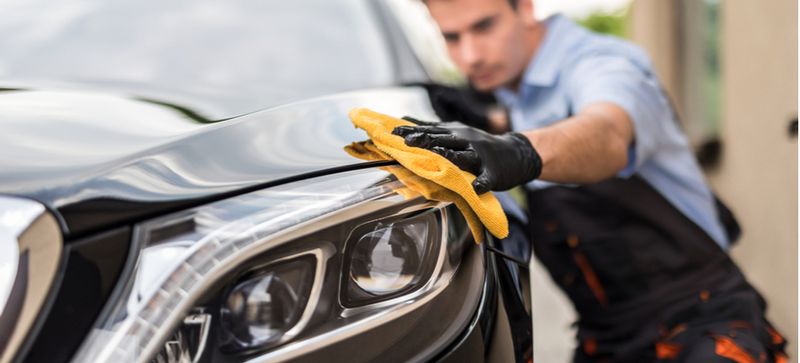
How Often Should You Wax Your Car?
Keeping your car’s exterior looking shiny and protected is essential for maintaining its value and overall appearance. One of the best ways to achieve this is by regularly waxing your car. But how often should you wax your car and what factors should you consider?
There is no one-size-fits-all answer to this question as the frequency of waxing your car depends on various factors such as weather conditions, usage, and the type of wax you use. In general, experts recommend waxing your car every three to six months. However, if you live in an area with harsh weather conditions, such as extreme heat or heavy snowfall, you may need to wax your car more frequently.
Regularly waxing your car helps protect the paint from fading, scratches, and other damages caused by UV rays, dirt, and pollutants. It creates a protective barrier that acts as a shield against environmental factors. Additionally, waxing gives your car a smooth and glossy finish, enhancing its aesthetic appeal.
Remember that even if you have a new car, it is important to wax it regularly. Waxing is not just for older cars. By starting a waxing routine early on, you can prevent unnecessary wear and tear, keeping your car looking new for longer.
When choosing a wax for your car, consider factors such as the type and color of your car’s paint and your desired finish. There are various types of wax available, including carnauba wax, synthetic wax, and spray wax. Research different options and choose the one that best suits your needs.
In conclusion, waxing your car is an essential part of car maintenance that helps protect your car’s exterior and enhance its overall appearance. By waxing your car every few months or as needed, you can ensure it stays in optimal condition for years to come.
Why is it important to wax your car?
Waxing your car is an essential part of regular car maintenance. It not only enhances the appearance of your car but also provides protection against various external elements.
Wax acts as a protective layer on your car’s paint, guarding it against harmful UV rays, oxidation, and fading caused by sun exposure. It also helps to prevent damage from environmental contaminants such as dirt, dust, acid rain, and bird droppings.
Regular waxing can also make it easier to clean your car. The smooth surface created by the wax repels water, making it less likely for dirt and grime to adhere to your car’s paint. This means that you will spend less time and effort washing your car.
In addition to protecting your car’s paint, waxing can also improve the resale value of your car. A well-maintained and waxed car will have a glossy finish that is more appealing to potential buyers. It gives the impression that the car has been cared for and is in good condition.
So, how often should you wax your car? It is recommended to wax your car every three to six months, depending on factors such as your climate, storage conditions, and driving habits. If you live in an area with harsh weather conditions or frequently drive on roads with salt or gravel, you may need to wax your car more often.
Overall, waxing your car is an important step in preserving its beauty and protecting its paint. By regularly waxing your car, you can keep it looking shiny and new while also ensuring its long-term value.
Benefits of waxing your car
Waxing your car regularly is an essential part of car maintenance. Here’s why it’s important:
1. Protection from the elements: Waxing your car creates a protective layer that shields your car’s paint from harmful UV rays, dirt, debris, and other environmental contaminants. This prevents fading, discoloration, and damage to the paint.
2. Preserves the paint: Regular waxing helps maintain the integrity of your car’s paint job. It minimizes the appearance of scratches and swirl marks, making your car look newer for longer.
3. Enhances the shine: Waxing gives your car a glossy finish that catches the light, making it look sleek and well-maintained. It can bring back the original luster of the paint, giving your car a showroom-quality shine.
4. Easier cleaning: The smooth and protective layer created by waxing makes it easier to clean your car. Dirt and grime can be easily removed, reducing the time and effort required for regular cleaning.
5. Increased resale value: A well-maintained car with a glossy and protected paint job is more attractive to potential buyers. Regular waxing helps preserve the car’s value and can result in a higher resale price.
Overall, regular waxing is an effective way to protect and enhance the appearance of your car, keeping it looking its best for years to come.
How often should you wax your car?
Regularly waxing your car is an important part of its maintenance. Not only does waxing make your car look shiny and new, but it also protects the paint and helps prevent damage from dirt, UV rays, and other environmental factors.
So, how often should you wax your car? The frequency of waxing depends on various factors, such as the type of wax used, the climate you live in, and how often you drive your car.
As a general rule of thumb, it is recommended to wax your car every three to four months. However, if you live in an area with harsh weather conditions, such as extreme heat or salted roads during winter, you may need to wax your car more frequently.
If you notice that water no longer beads up on your car’s surface or that the paint appears dull, it’s a good indication that it’s time to wax your car. Additionally, if you park your car outdoors or frequently expose it to elements like direct sunlight, pollen, or tree sap, you may want to wax it more often to provide extra protection.
When it comes to choosing the right wax for your car, there are several options available, including spray wax, liquid wax, and paste wax. Each type has its pros and cons, so it’s essential to choose one that works best for your car’s needs.
Remember, regular waxing is not only about aesthetics but also about preserving the value and longevity of your car’s exterior. By following a regular waxing schedule and using high-quality products, you can keep your car looking great and protected for years to come.
Frequency of waxing for different conditions
How often you should wax your car depends on various factors, including the condition of your car and the environmental conditions it is exposed to. Here is a general guide to help you determine the recommended frequency of waxing:
| Normal driving conditions | Every 3-4 months |
| Harsh weather conditions (extreme heat, cold, or humidity) | Every 2 months |
| Frequent exposure to sun or UV rays | Every 1-2 months |
| Off-road or dusty conditions | Every 1 month |
| Coastal or saltwater areas | Every 1 month |
It’s important to note that these are general guidelines, and the frequency may vary depending on your specific circumstances. Regularly inspect your car’s paint surface and look out for signs of reduced protection, such as water not beading on the surface, and consider waxing more frequently if necessary.
By properly maintaining your car’s wax protection, you can ensure that it retains its shine and is better protected against environmental factors that can damage the paint. Regular waxing will also make future wax applications easier and more effective.
Remember, waxing not only enhances the appearance of your car, but also provides a protective barrier against UV rays, dirt, and other contaminants. So make sure to prioritize waxing your car based on the specific conditions it faces to keep it looking its best.
Best time to wax your car
When it comes to maintaining the appearance of your car, regular waxing is an important step. But how often should you wax your car?
It depends on a few factors such as the climate you live in, how often you wash your car, and the type of wax you use. Generally, experts recommend waxing your car every 3 months.
In areas with harsh weather conditions, such as hot summers or snowy winters, you may need to wax your car more often. The extreme temperatures and elements can damage the paint and finish of your car, so waxing it every 2 months might be better.

If you frequently wash your car, you may want to wax it more often as well. Washing can remove the protective layer of wax, so it’s important to reapply it regularly.
Additionally, the type of wax you choose can also affect how often you should wax your car. Some waxes provide longer protection, while others may require more frequent applications. Be sure to read the instructions on the wax product to determine the recommended frequency.
Ultimately, how often you should wax your car depends on your specific circumstances. So it’s important to assess the condition of your car and decide when it needs a fresh coat of wax. By regularly waxing your car, you can keep it looking shiny and protected.
Temperature considerations
When it comes to waxing your car, it’s important to take into account the temperature conditions. The temperature can greatly affect the effectiveness and longevity of the wax job.
If your car is too hot, the wax may become softer and harder to work with. It may also lead to streaks and uneven application. On the other hand, if the temperature is too cold, the wax may not adhere properly and could leave a hazy or cloudy finish.
So, how often should you wax your car considering the temperature? It’s recommended to wax your car when the temperature is between 60°F and 80°F (15°C and 27°C). This is the ideal range for the wax to bond well with the paint and ensure a smooth and glossy finish.
Additionally, if you live in an area with extreme temperature variations or harsh weather conditions, you may need to wax your car more frequently. Freezing winters, scorching summers, and salt from snowy roads can damage the wax coating, so it’s important to provide extra protection by waxing your car regularly.
Remember, waxing your car not only enhances its appearance but also protects the paint from dirt, UV rays, and other environmental contaminants. By considering the temperature and waxing your car regularly, you can ensure that it stays in the best possible condition.
Time of day considerations
When it comes to waxing your car, the time of day can make a difference in your results. The best time to wax your car is when the vehicle is cool, such as in the early morning or late evening. This is because when the car is hot, the wax can dry too quickly and become difficult to remove. On the other hand, waxing your car in direct sunlight can cause the wax to become streaky or leave residue.
By choosing the right time of day, you can ensure that you get the best results from your waxing efforts. Taking the time to wax your car often will not only enhance its appearance but also provide protection from the elements, such as UV rays and pollutants. So, how often should you wax your car? It depends on various factors, including the climate and your personal preferences.
Generally, it is recommended to wax your car every three to four months. However, if you live in an area with harsh weather conditions or if you notice that water is no longer beading on the surface, it may be time to wax your car more frequently. Additionally, if you frequently park your car outdoors or if it is exposed to salt or other corrosive substances, you may need to wax it more often.
Remember, regular waxing not only keeps your car looking its best but also helps to maintain its value. So, make sure to prioritize waxing your car and consider the time of day when doing so for optimal results.
Types of car wax
When it comes to waxing your car, there are several types of car wax to choose from. The type of wax you should use often depends on the condition of your car and your personal preference.
1. Carnauba wax: This is one of the most popular types of car wax. It is derived from the leaves of the carnauba palm tree and is known for its deep shine and durability. Carnauba wax is easy to apply and provides excellent protection against UV rays, water, and dirt. It should be applied every 3-4 months.
2. Synthetic wax: Synthetic waxes are made from artificial polymers and offer long-lasting protection. They are often easier to apply and remove compared to natural waxes. Synthetic wax can last up to 6 months, making it a good choice for busy car owners.
3. Spray wax: Spray waxes are the easiest and quickest option for waxing your car. They come in a spray bottle and can be applied directly to the surface of your car. Spray waxes offer decent protection but may not last as long as other types of wax. They can be used as a quick touch-up in between regular waxing sessions.
4. Liquid wax: Liquid waxes are versatile and can be used on various surfaces, including paint, chrome, and plastic. They are easy to apply and can provide a high level of shine. Liquid waxes should be applied every 2-3 months.
5. Paste wax: Paste waxes are typically more durable and offer better protection compared to liquid waxes. They are made of natural or synthetic ingredients and usually require more effort to apply and remove. Paste waxes provide a deep shine and can last up to 6 months.
Ultimately, the type of car wax you choose depends on your specific needs and preferences. It is recommended to follow the instructions provided by the manufacturer for best results.
Natural wax
Natural wax is a popular choice for car waxing due to its durability and long-lasting protection. It is recommended to apply natural wax to your car every 2 to 3 months to maintain its shine and protect it from environmental damage.
How often you should wax your car with natural wax depends on various factors, such as the climate, driving conditions, and the condition of your car’s paint. If you live in an area with harsh weather conditions or frequently drive in extreme conditions, you may need to wax your car more often.
Using natural wax regularly provides a protective layer that shields your car’s paint from UV rays, oxidation, dirt, and other contaminants. It also helps to preserve the color and shine of your car’s paint for a longer period of time.
When applying natural wax, make sure to thoroughly clean and dry your car’s surface before waxing. This ensures that the wax adheres properly and provides maximum protection. Apply the wax using a soft cloth or applicator pad in small circular motions, then let it dry to a haze. Finally, buff the wax with a clean microfiber cloth to reveal a glossy and protected finish.
Regularly waxing your car with natural wax not only enhances its appearance but also helps to maintain its value. It is an essential part of car maintenance that should not be overlooked. So, make sure to include natural waxing in your car care routine!
Synthetic wax
Synthetic wax is a popular choice for car enthusiasts who want to give their vehicles a long-lasting shine. This type of wax is made from a combination of polymers and silicones, which creates a protective layer on the car’s paint surface.
So, how often should you wax your car with synthetic wax? It is recommended to wax your car with synthetic wax every 3 to 4 months. This timeframe ensures that your car’s paint is consistently protected from the elements and maintains its glossy appearance.
However, it’s essential to note that the frequency of waxing can vary depending on factors such as weather conditions and how frequently you wash your car. If you live in an area with harsh weather conditions, such as extreme heat or cold, you may need to wax your car more frequently to provide optimal protection.
Additionally, if you frequently wash your car or expose it to road debris or contaminants, you might consider waxing it more often. These activities can strip away the protective layer of wax, leaving your car’s paint vulnerable to damage.
In summary, regular waxing with synthetic wax is crucial to keep your car’s paint protected and looking its best. A recommended timeframe is every 3 to 4 months, but adjusting this interval to your specific circumstances will ensure optimal results.
How to wax your car
To keep your car looking its best, regular waxing is essential. Here are the steps to properly wax your car:
- Wash your car: Before waxing, make sure your car is clean. Use a car wash soap and a soft sponge or cloth to remove any dirt or debris.
- Choose the right wax: There are different types of wax available, including paste, liquid, and spray-on. Choose the one that works best for your car.
- Apply the wax: Start by applying a small amount of wax onto a clean applicator pad or cloth. Then, apply the wax in a circular motion, working on one section of the car at a time.
- Let it dry: Allow the wax to dry on the car’s surface for the recommended time, usually a few minutes.
- Buff the wax: Once the wax is dry, use a clean microfiber cloth to gently buff away the wax residue. This will leave your car with a smooth, shiny finish.
- Repeat if necessary: Depending on the type of wax and the condition of your car’s paint, you may need to apply multiple coats of wax for optimal protection and shine.
Remember to wax your car regularly, around every 3 to 6 months, to maintain its appearance and protect the paint from the elements.
Preparing the car’s surface
Before applying wax to your car, it is important to properly prepare the surface. This will ensure that the wax adheres to the paintwork effectively and provides the best possible protection. Here are the steps you should follow:
- Wash your car: Start by thoroughly washing your car to remove any dirt, debris, and grime. Use a mild car shampoo and a soft microfiber cloth or sponge to avoid scratching the paintwork.
- Dry the car: After washing, dry the car completely using a clean, lint-free towel or a microfiber drying cloth. This will prevent water spots from forming on the surface.
- Inspect for imperfections: Take the time to carefully inspect your car’s paintwork for any imperfections such as scratches, swirl marks, or oxidation. These should be addressed and corrected before waxing the car.
- Remove contaminants: Use a clay bar or a clay mitt to remove any embedded contaminants from the paint surface, such as tree sap, tar, or industrial fallout. This will ensure a smooth and clean surface for waxing.
- Polish (optional): If your car’s paintwork has minor imperfections, you may choose to polish it before waxing. Polishing will help remove swirl marks, minor scratches, and restore the shine of the paint.
Following these steps will ensure that your car’s surface is clean, smooth, and ready to receive the wax. Remember to always read and follow the instructions provided with the wax product for the best results.
Applying the wax
When it comes to waxing your car, there are a few different methods you can use. Ultimately, how often you should wax your car depends on your personal preference and the conditions your car is exposed to.
One common method of applying wax is by hand. This involves using a clean cloth or applicator pad to gently spread the wax onto the car’s paintwork. Be sure to apply an even layer and work in small sections to ensure thorough coverage.
Another option is using an electric buffer or polisher. These tools can help to evenly distribute the wax and save time compared to hand application. However, it’s important to use caution and not apply too much pressure, as this can damage the paintwork.
Regardless of the method you choose, it’s important to follow the instructions on the wax product you are using. This will provide guidance on how much wax to apply and how long to let it sit before buffing it off.
In general, it is recommended to wax your car every 3-4 months to maintain a protective layer on the paintwork. However, if your car is regularly exposed to harsh elements such as salt, sun, or pollutants, you may need to wax it more frequently.
Ultimately, the key is to pay attention to your car’s paint and look for signs that it needs waxing. If the water no longer beads up on the surface, it may be time to reapply the wax. Remember that regular waxing not only enhances the appearance of your car but also helps to protect it from the elements and prolong its lifespan.
Question-answer:
How often should I wax my car?
The frequency of waxing your car depends on various factors such as the type of wax used, weather conditions, and how often you drive. As a general rule of thumb, it is recommended to wax your car every three to four months to maintain its shine and protect the paint from contaminants and UV rays.
What are the benefits of waxing my car?
Waxing your car provides several benefits. Firstly, it creates a protective layer on the paint, preventing damage from UV rays, dirt, and other contaminants. Secondly, it enhances the shine and gloss of your car, giving it a showroom-like finish. Lastly, waxing also helps in preserving the resale value of your car by keeping the paint in good condition.
Can I wax my car too often?
While it is important to wax your car regularly, waxing it too often can be excessive and may not provide any additional benefits. Over-waxing can cause a buildup of wax layers, which can make your car look dull and attract more dirt. Therefore, it is recommended to follow a proper schedule and not exceed waxing your car more than once every three months.
Is there a specific type of wax I should use for my car?
There are different types of wax available in the market, such as carnauba wax, synthetic wax, and ceramic wax. The choice of wax depends on your preferences and the desired results. Carnauba wax provides a deep, warm shine and is ideal for show cars, while synthetic wax offers long-lasting protection. Ceramic wax, on the other hand, provides the best durability and protection against scratches and UV rays. It is recommended to choose a high-quality wax that suits your needs and budget.
Are there any signs that indicate it’s time to wax my car?
Yes, there are a few signs that indicate it’s time to wax your car. Firstly, if your car’s paint feels rough or lacks shine, it means that the protective wax layer has worn off and needs to be replenished. Secondly, if water drops don’t bead up and slide off the surface easily, it means that the wax layer is deteriorating. Lastly, if you notice small scratches or swirl marks on the paint, waxing can help in reducing their visibility and prevent further damage.
How often should I wax my car?
The frequency of waxing your car depends on various factors such as climate, usage, and storage conditions. As a general rule, it is recommended to wax your car every three to four months to maintain its shine and protection.
Does the type of wax matter?
Yes, the type of wax does matter. There are different types of waxes available such as carnauba wax, synthetic wax, and ceramic coating. Each type has its own benefits and durability. It is important to choose a wax that suits your needs and provides adequate protection for your car.





